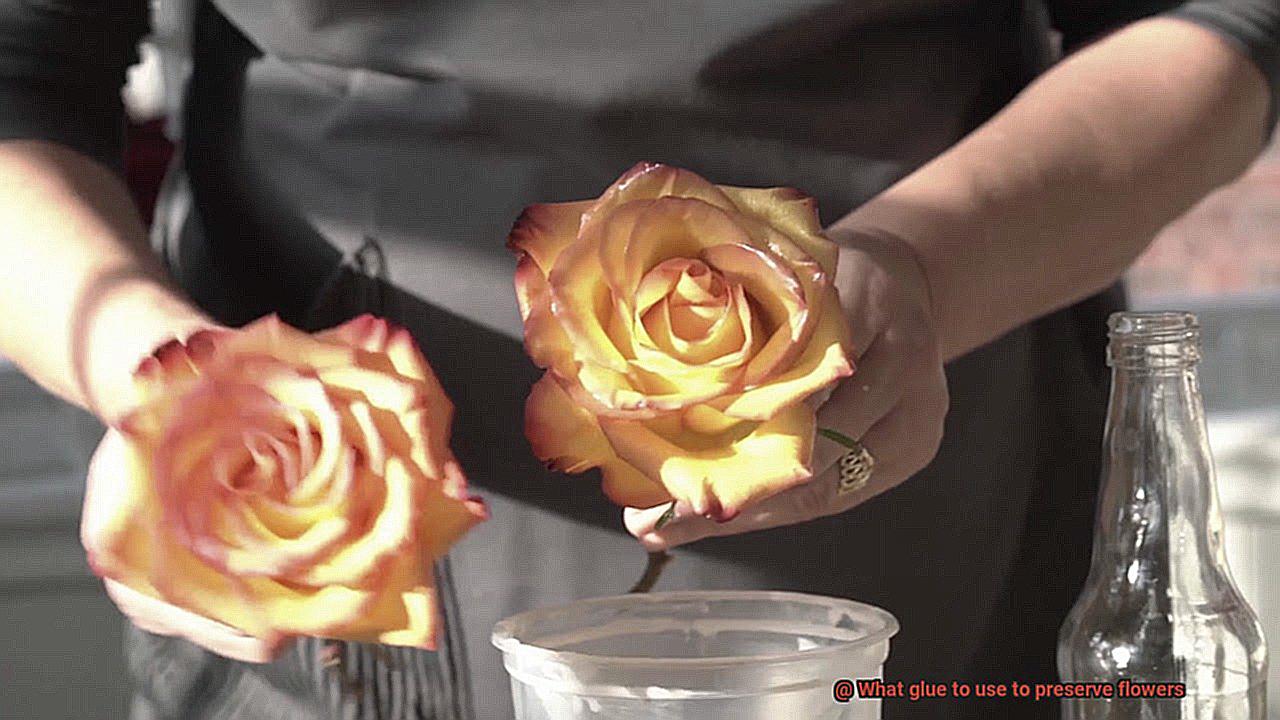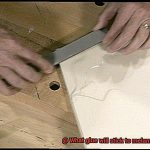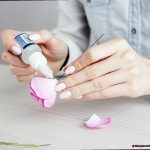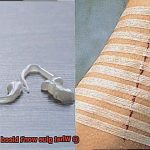Are you one of those flower fanatics, green thumbs, or folks who simply can’t resist the allure of fresh blossoms? If that’s a resounding “yes,” then it’s safe to assume you’ve pondered how to preserve the beauty of your favorite flowers long after they’ve bid their final farewell. Fear not. We’re here to unveil the secrets behind choosing the ultimate glue for preserving your beloved blooms.
Preserving flowers may sound like an intimidating feat, but with the right adhesive, it becomes a breeze that allows you to capture nature’s fleeting magnificence indefinitely. Whether you dream of crafting breathtaking dried flower arrangements, whimsical petal crafts, or treasured keepsakes, selecting the perfect glue is your ticket to extraordinary results.
In this blog post, we’ll embark on a fragrant journey exploring various types of glue specifically designed to preserve flowers in all their original glory. From tried-and-true classics like hot glue to innovative floral preservation adhesives, we’ll dive into their pros and cons while sharing foolproof techniques for achieving long-lasting masterpieces. So grab yourself a cuppa, settle in comfortably, and let’s unleash your inner flower arranger as we dive headfirst into the art of preservation.
What is the Best Glue for Preserving Flowers?
Contents
- 1 What is the Best Glue for Preserving Flowers?
- 2 Clear-Drying Craft Glue or Adhesive
- 3 Floral Adhesive: A Water-Based and Non-Toxic Option
- 4 Using Hot Glue to Secure Heavier Flowers
- 5 Avoiding Superglue and Solvent-Based Glues
- 6 Testing the Glue on a Small Area First
- 7 Applying Sparingly for Best Results
- 8 The Limitations of Preserved Flowers
- 9 Conclusion
Preserving flowers allows us to capture their ephemeral beauty and keep it alive for years to come. However, choosing the right glue is essential to maintain their delicate appearance and longevity. In this comprehensive guide, we will explore the best glues for preserving flowers and provide expert advice on how to elevate your floral preservation project.
Top Glues for Preserving Flowers:
- Epoxy Resin: Renowned for its durability and transparent finish, epoxy resin is a favorite among floral preservationists. This two-part adhesive forms a strong bond without compromising the fragile petals of your flowers. Its glossy finish enhances the overall allure of your preserved blooms.
- Silicone Adhesive: If flexibility and water resistance are important to you, silicone adhesive should be your go-to choice. This adhesive securely bonds your flowers without causing any harm. Its moisture resistance prevents the growth of mold or mildew, ensuring long-lasting results.
- Low-Temperature Hot Glue: Perfect for delicate or dried flowers, a low-temperature hot glue gun offers a swift and secure bond. Operating at a lower temperature compared to regular hot glue guns, it minimizes the risk of damage to your precious blooms. This type of glue is ideal for small floral arrangements or craft projects.
Important Considerations:
- Avoid using regular craft glues or super glues as they can damage your flowers and leave unsightly residue.
- Prioritize performing a compatibility test before applying any glue to your flowers.
- Adhere to the manufacturer’s instructions regarding application techniques and drying times for optimal results.
- To maximize longevity, display preserved flowers away from direct sunlight and humid environments.
- Remember that while glue can preserve the shape and structure of flowers, it cannot prevent eventual fading or loss of color.

Clear-Drying Craft Glue or Adhesive
Clear-drying craft glue or adhesive is a popular choice for preserving flowers due to its numerous advantages. Firstly, it provides a strong bond while remaining transparent when it dries, allowing the natural beauty of the flowers to shine through without the glue being visible. Additionally, clear-drying craft glue has a quick drying time, which is essential when working with delicate flowers. This minimizes the risk of damage or wilting and allows for efficient work, especially when gluing multiple flowers or arranging them in a specific design.
When choosing clear-drying craft glue for flower preservation, it is important to select one that is acid-free and non-toxic. Acid-free glue ensures that the glue will not cause any discoloration or damage to the flowers over time. Non-toxic glue is safe to use and will not harm your health or the environment.
Flexibility is another key consideration when choosing clear-drying craft glue for flower preservation. Flowers are naturally fragile and can be prone to movement, especially when exposed to changes in temperature or humidity. A flexible glue will allow the flowers to move naturally without causing them to break or detach from the surface.
To apply clear-drying craft glue for flower preservation, it is recommended to use a small brush or applicator. This allows for precise application and helps to avoid excess glue on the flower petals or leaves, which can create a glossy appearance that may not be desired for certain arrangements.
Once the clear-drying craft glue has been applied, gently pressing the flower onto the desired surface or arrangement helps ensure proper adhesion and minimizes air bubbles. It is important to handle the flowers with care during this process to avoid damaging them.
While clear-drying craft glue offers many advantages, there are also some disadvantages to consider. One potential drawback is that excess glue can create a glossy appearance on the flowers, which may not be desired for certain arrangements. Additionally, over-gluing can affect the natural appearance of the preserved flowers, so it is important to be cautious and avoid using too much glue.
Floral Adhesive: A Water-Based and Non-Toxic Option
Capturing the natural elegance of flowers and extending their lifespan is a delightful art. When it comes to choosing the perfect adhesive for this delicate task, a water-based and non-toxic floral adhesive emerges as the clear winner. In this article, we will delve into the advantages of using this adhesive, exploring its compatibility with various flower types, its long-lasting effects, and its superior safety compared to other glues.
Advantage 1: Non-Toxic Nature
Water-based floral adhesive stands out for its non-toxic composition. Unlike traditional glues with harmful chemicals or noxious fumes, this adhesive ensures the safety of both user and flowers. No more worries about respiratory irritation or compromising your health while working on indoor floral arrangements.
Advantage 2: Compatibility with Various Flower Types
Delicate roses, vibrant sunflowers, intricate orchids—water-based floral adhesive is suitable for an array of flowers. Its gentle formula ensures that petals remain unharmed and natural beauty preserved. The adhesive dries clear, allowing flowers to shine without any visible residue.
Advantage 3: Long-Lasting Results
When investing time and effort into creating a stunning floral arrangement, longevity is key. Water-based floral adhesive provides a strong bond that can withstand the test of time. However, it’s important to note that while the bond is strong, it is not permanent. Over time and with exposure to moisture or direct sunlight, the adhesive may weaken. To prolong the lifespan of your preserved flower arrangement, handle it with care and avoid placing it in high humidity or direct sunlight.
Advantage 4: Safer Alternative to Other Glues
Compared to solvent-based adhesives, water-based floral adhesive is a much safer option. Solvent-based glues emit strong fumes that harm both flowers and users. In contrast, water-based adhesives are virtually odorless and free from harmful chemicals or solvents. This makes them a popular choice for indoor use, especially in enclosed spaces with limited ventilation.
Using Hot Glue to Secure Heavier Flowers

If you’ve ever tried to create a stunning floral arrangement or craft with heavy flowers, you know the struggle of keeping them in place. But fear not. Hot glue is here to save the day. This versatile and strong adhesive can provide the stability and support needed to showcase those beautiful, weighty blooms. In this article, we’ll guide you through the steps of using hot glue to secure heavier flowers in your floral arrangements or crafts.
Before we dive into the process, it’s important to note that not all flowers can withstand the heat of hot glue. Delicate blossoms may wilt or get damaged, so it’s always wise to test a small area first or explore alternative adhesives.
Now, let’s walk through the steps:
- Prep the Surface: Start by cleaning any debris or excess moisture from the area where you want to attach the flower. This will ensure a clean and secure bond.
- Heat up Your Glue Gun: Load a glue stick into the gun and give it a few minutes to reach the optimal temperature for bonding.
- Apply a Small Amount of Hot Glue: With caution, apply a modest amount of hot glue onto the surface where you’ll attach the flower. Avoid applying too much, as it can overflow or create unsightly drips.
- Press the Flower onto the Adhesive: Immediately after applying the hot glue, gently press the heavier flower onto it. Hold it in place for a few seconds, allowing the glue to cool and set.
- Reinforce if Needed: If you feel that the bond is not strong enough, add additional small dots of hot glue around the base of the flower or along any weak points.
It’s crucial to remember that hot glue might not be suitable for all types of floral arrangements or crafts involving heavy flowers. Delicate blossoms or fragile materials may require a more gentle and flexible attachment method, such as floral tape or wire.
Additionally, keep in mind that hot glue may become brittle over time, potentially compromising the durability of certain projects. For a more permanent solution, consider using a stronger adhesive specifically designed for floral applications.
Lastly, always handle the glue gun with care to avoid burns or injuries. Follow the manufacturer’s instructions and take necessary safety precautions to ensure a safe and successful crafting experience.
Avoiding Superglue and Solvent-Based Glues
When it comes to preserving flowers, it’s essential to steer clear of superglue and solvent-based glues. These adhesives, although useful for many crafting purposes, can wreak havoc on delicate flowers. Let’s dive deeper into why you should avoid using these glues when working with your floral creations.
Superglue, also known as cyanoacrylate adhesive, is renowned for its fast-drying and strong bond. However, when applied to flowers, it can cause discoloration and damage to the petals. The chemical composition of superglue may react with the natural pigments in the flowers, resulting in unsightly browning or fading over time. Imagine the horror of seeing your vibrant blooms lose their luster.
In addition to potential discoloration, superglue poses another challenge. Its quick-drying nature may be advantageous for some projects, but when arranging flowers, it becomes a hindrance. Once hardened, superglue turns brittle and susceptible to breaking or cracking with temperature changes or handling. Preserved flowers should stand the test of time, so it’s crucial to opt for a more flexible adhesive that allows for natural movement.
Solvent-based glues like epoxy and rubber cement should also be avoided when working with flowers. These adhesives contain harsh solvents that can corrode delicate flower surfaces. Furthermore, they emit pungent fumes that can be harmful if inhaled. Flowers are sensitive beings, and exposure to such fumes may expedite their deterioration process.
So what should you use instead? Look for specially formulated floral glues that are non-toxic and safe for long-term use on flowers. These water-based glues are a dream to work with and clean up. They provide a strong bond without causing damage to the fragile petals or leaves of the flowers. Furthermore, they allow for natural movement and flexibility, ensuring that your preserved flowers maintain their captivating allure.
When searching for a floral glue, read product labels and select one specifically labeled for use on flowers. You can find these specialized adhesives labeled as “flower adhesive” or “floral glue” at most craft stores or online retailers. By opting for these floral-specific glues, you can rest assured that your preserved flowers will remain stunning and intact for an extended period.
Testing the Glue on a Small Area First
Preserving flowers is a wonderful way to hold onto the beauty and memories of a special occasion. Whether it’s a wedding bouquet, a sentimental gift, or a flower from your garden that you want to cherish forever, using the right glue is crucial in ensuring your preserved flowers retain their beauty. That’s why it’s so important to test the glue on a small area first before applying it to your entire arrangement.
When testing the glue on a small area, you get a sneak peek into how it will interact with your delicate flower petals. You want to make sure that the glue won’t cause any damage or discoloration because nobody wants ugly, discolored flowers sitting on their shelf.
To test the glue on a small area, follow these steps:
Choose a small, inconspicuous area of the flower to test on. This could be a petal that’s not easily visible or a part of the flower that can be easily trimmed if necessary.
Apply a small amount of glue onto the chosen area using a toothpick or a small brush. Be careful not to use too much glue, as this can lead to clumping or smudging. You want an even application for the best results.
Let the glue dry completely. This will give you an idea of how long it takes for the glue to set and whether it leaves any visible residue. Patience is key here.
Once the glue has dried, inspect the tested area closely for any signs of damage, discoloration, or changes in texture. If everything looks good, then congratulations. You’ve found a glue that works for your flowers.
However, if there are negative effects, don’t fret. This is why testing on a small area is so important. If you notice any discoloration or damage, it’s a sign that you need to try a different type of glue or adhesive. There are plenty of options out there specifically designed for preserving flowers, so don’t give up just yet. Experimentation may be necessary to find the perfect match for your blooms.
By taking the time to test the glue on a small area first, you can make an informed decision about which adhesive to use for your flower preservation project. It’s all about ensuring that your flowers remain beautiful and untouched by any harmful effects of the glue. Plus, it gives you a chance to see how well the glue adheres to different types of petals and whether it provides the desired result.
Applying Sparingly for Best Results
Preserving flowers is a delightful way to cherish their beauty long after their natural lifespan. However, when it comes to using glue for preservation, applying it sparingly is essential for achieving the best results. In this blog post, we will explore the reasons why using glue judiciously is vital for maintaining the authenticity and longevity of preserved flowers.
Preserving the Authentic Beauty:
Capturing the delicate and vibrant essence of flowers is our goal when preserving them. To achieve this, it is crucial to apply just enough glue to hold the petals and stems in place. Excessive glue can easily mask or dull the natural appeal of the flowers, compromising their authentic look and charm.
Avoiding Damage and Discoloration:
Some glues contain chemicals that can react adversely with flower petals, causing discoloration or deterioration. By applying glue sparingly, we can reduce the risk of any adverse reactions that might harm the appearance or quality of the preserved flowers. This ensures that the delicate hues of the flowers remain as radiant as when they were freshly picked.
Achieving Better Control:
Precision plays a significant role in preserving flowers, and applying glue sparingly offers better control over the preservation process. Excessive glue can make it challenging to position the flowers correctly or adjust their arrangement if needed. By strategically using small amounts of glue, we have more flexibility in arranging the flowers and achieving the desired look.
Tools for Precise Application:
To apply glue sparingly, we recommend using a fine-tip applicator or a small brush. These tools enable precise application and prevent excessive amounts of glue from being dispensed onto the flowers. Remember, a little goes a long way when it comes to gluing flowers for preservation.
The Limitations of Preserved Flowers
Preserved flowers have blossomed in popularity as a low-maintenance alternative to fresh blooms. While they offer numerous benefits, it’s vital to understand their limitations. In this blog post, we’ll explore the key drawbacks of preserved flowers, including their durability, fragility, limited versatility, altered appearance, and cost implications. So let’s delve deeper into the world of preserved flowers and uncover their constraints.
Durability:
Preserved flowers undoubtedly outlive their fresh counterparts, boasting a lifespan of months or even years. However, as time passes, their vibrant hues may fade, and petals can become brittle. This gradual deterioration can diminish the visual allure of your arrangement, transforming once striking blooms into a mere semblance of their former glory.
Fragility:
If fresh flowers are delicate, preserved flowers take fragility to another level. Handle them with the utmost care to prevent breakage or crumbling. Mishandling these fragile beauties can quickly turn your stunning arrangement into a heap of petals, leaving you disheartened.
Limited Versatility:
Fresh flowers offer limitless possibilities for creativity in arranging and shaping. Unfortunately, preserved flowers often come pre-arranged and lack flexibility. If you relish experimenting with various designs or desire the freedom to alter arrangements on a whim, preserved flowers may not be the optimal choice for you.
Altered Appearance:
Preservation techniques such as drying, pressing, or immersing in preservatives can significantly transform the natural look and texture of flowers. While some individuals appreciate the unique aesthetic created through these methods, others may prefer the authentic look and feel of fresh blooms. The altered appearance of preserved flowers can be both a blessing and a curse.
Cost Considerations:
Initially, preserved flowers may seem cost-effective since they don’t require frequent replacement like fresh flowers. However, high-quality preserved flowers can come with a substantial price tag. Moreover, maintaining their appearance over time may necessitate investing in specialized products or treatments, adding to the overall cost.
Preserved flowers offer an extended lifespan and reduced maintenance compared to fresh flowers. However, it’s essential to consider their limitations before committing.
From the gradual deterioration of durability to the fragility of handling, limited versatility in arrangement options, altered appearance due to preservation techniques, and potential cost implications, each factor plays a pivotal role in determining whether preserved flowers are the right fit for your floral needs.
xw_cUtg_Nd4″ >
Conclusion
Preserving flowers can be a beautiful way to capture their natural beauty and create lasting memories. When it comes to choosing the right glue for this delicate task, there are a few options that can provide excellent results.
One popular choice is clear craft glue, which is readily available and easy to use. This type of glue dries transparent, ensuring that it won’t detract from the vibrant colors of the flowers. It also provides a strong bond, keeping the petals and stems securely in place.
Another option is floral adhesive, specifically designed for working with flowers. This type of glue is often water-based, making it safe to use on delicate petals without causing any damage. Floral adhesive also dries quickly, allowing you to complete your project in no time.
For those looking for a more natural approach, plant-based glues can be an excellent choice. These glues are made from renewable resources such as cornstarch or potato starch and are non-toxic. They dry clear and provide a secure bond while being environmentally friendly.
When using any type of glue to preserve flowers, it’s important to apply it sparingly and with precision. Too much glue can create unsightly residue or even damage the flowers themselves. Additionally, always make sure to follow the instructions provided by the manufacturer to ensure optimal results.
In conclusion, when it comes to preserving flowers with glue, there are several options available depending on your preferences and needs. Whether you choose clear craft glue, floral adhesive, or plant-based glues, each offers its own advantages in terms of transparency, ease of use, and environmental impact.






